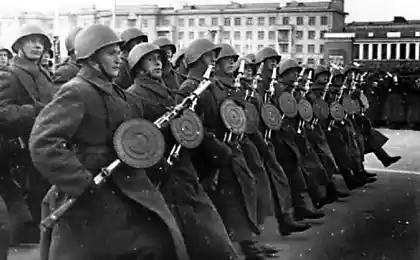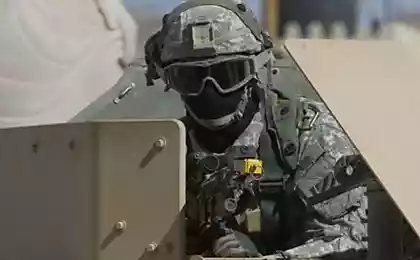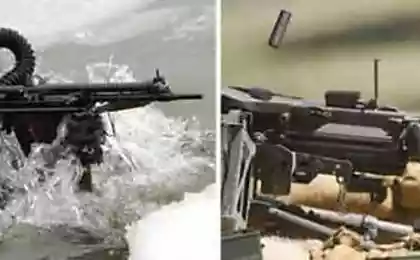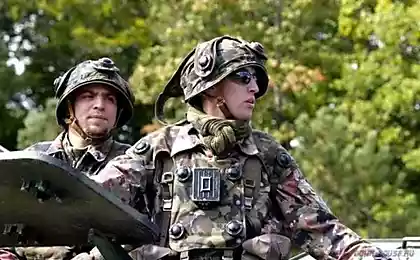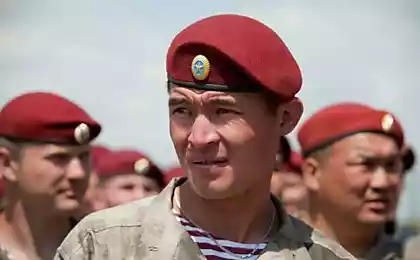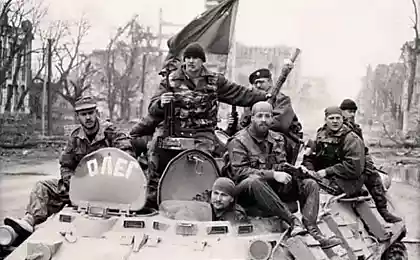45620
History and types of military berets
In many armies of the world, berets indicate affiliation using their units to elite troops. Let us examine their history and variations in different types of troops.

Given the practicality beret informal its use in Europe has military goals. An example is the blue beret, which became a symbol of Scottish armed forces in the 16th and 17th centuries. As an official military headgear takes was used during the war for the inheritance of the Spanish Crown in 1830 by order of General Tomás de Zumalacárregui, who wanted no-cost way to make hats resistant to the vagaries of the weather in the mountains, easy to clean and to use for special occasions .

Other countries followed suit, after the creation of the French Alpine rangers in the early 1880s. These mountain troops wore, which included several features innovative for its time. Including large berets, which still exist.
Berets have features that make them very attractive for the military: they are cheap, can be manufactured in a wide range of colors, can be rolled up and stuffed into a pocket or under the shoulder straps can be worn with headphones (which is one reason why the tankers took beret) . Beret was found particularly useful for the crews of armored vehicles, and the British Tank Corps (later the Royal Tank Corps) took the headdress in 1918.

After World War 1, when the question of changes in official uniforms considered at a high level, General Elles, who was a propagandist berets, brought another argument - during maneuvers to take comfortable to sleep and it can be used as a liner. After much debate, the Ministry of Defence, black beret was officially approved by the decree of His Majesty on March 5, 1924. Black beret remain the exclusive privileges of the Royal Tank Corps for quite a while. Then the practicality of this headdress was seen others and by 1940 all British armored units began to wear black berets.

German tank crews in the late 1930s also took picks and a mild slam inside. Black color became popular in the headdresses of tank crews, because it is not visible oil stains.

The Second World War gave takes on a new popularity. British and American commandos, are thrown into the rear of the Germans, in particular, in France, quickly appreciated the convenience berets, especially in dark colors - it was convenient for them to hide hair, they protect your head from the cold, takes used as a balaclava, etc. Some British units, entered berets as a headdress connections and branches. For example it was with SAS - Special Aviation Service, Special Forces, engaged in sabotage and reconnaissance behind enemy lines - they took the sand-colored beret (it symbolized the wilderness, where SASovtsam had to work against the army of Rommel). British paratroopers have chosen takes crimson - according to legend, the color offered writer Daphne du Maurier, the wife of General Frederick Brown, one of the heroes of World War II. For color beret paratroopers immediately got the nickname "cherries". Since then, raspberry beret became the unofficial symbol of military parachutists worldwide.

The first use of berets in the US military refers to 1943. 509th Airborne Regiment was crimson beret from their English counterparts, in recognition and uvazheniya.Ispolzovanie taken as a headdress soldiers in the Soviet Union takes its beginning in 1936. According to the order NKO wear berets dark blue, as part of a summer uniforms, soldiers were supposed to female and female students of military academies.

Berets have become the default military headdress in the late 20th and early 21st century, as well as a cocked hat, quiver, cap, garrison cap, cap, at one time in their respective eras. Berets are now worn by many soldiers in most countries around the world.

And now, in fact, taken in the elite of the army. And we start, of course, with the Alpine rangers - Division who introduced the fashion of wearing berets in the army. Alpine huntsman (Highland Fusiliers) - elite mountain infantry of the French Army. They are trained for combat operations in mountainous areas and in urban areas. Wear a dark blue beret.

French Foreign Legion beret wearing a light green color.
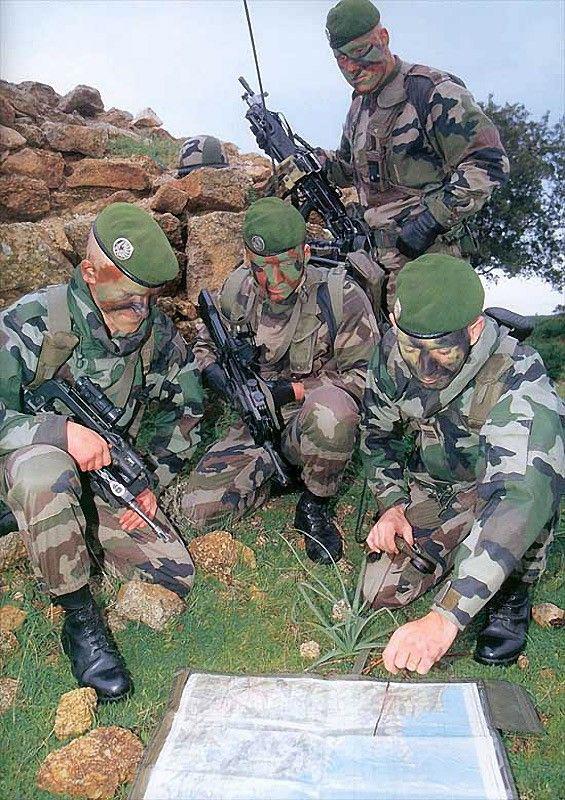
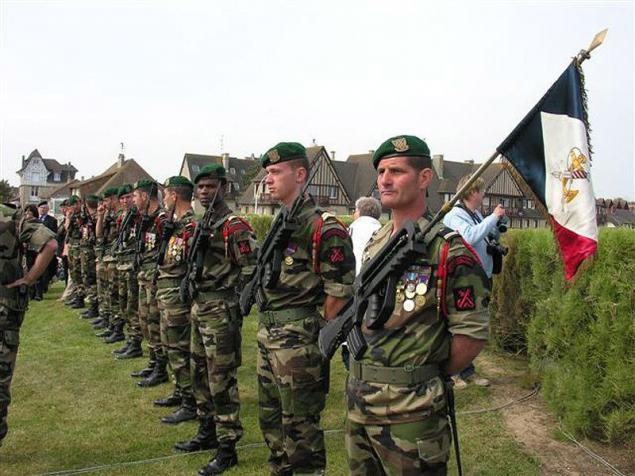
French Navy commandos wearing a green beret.

French marines wearing berets in dark blue.


French Air Force commandos wear dark blue berets.

French paratroopers wearing red berets.
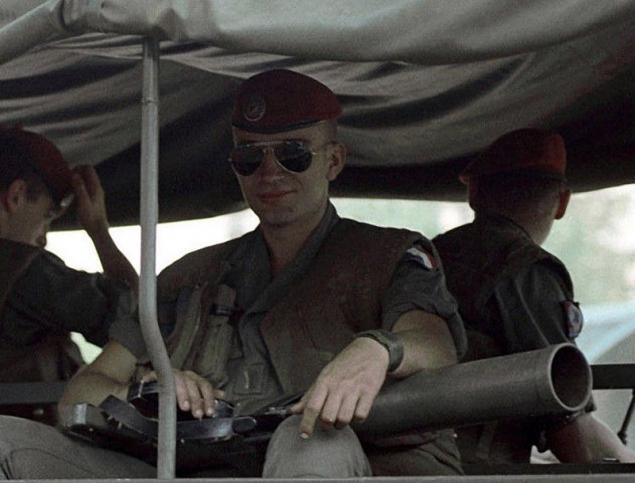

Airborne troops wear berets Germany maroon (Maroon).
German Special Forces (KSK) is berets of the same color, but with a different logo.

Vatican Swiss Guards are large black beret.
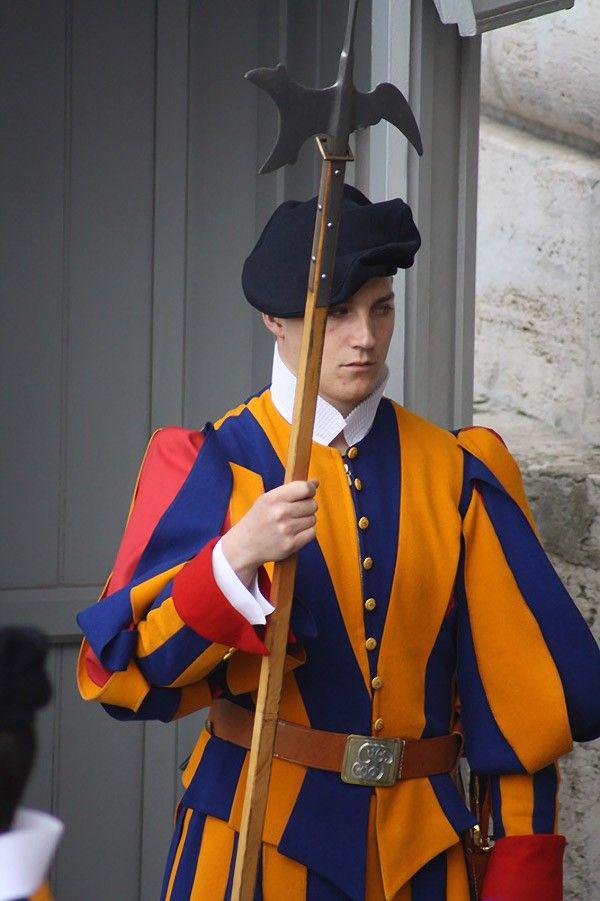
Dutch Royal Marines wearing berets in dark blue.


. Airmobile Brigade (11 Luchtmobiele Brigade) of the Netherlands Armed Forces beret wearing maroon (Maroon).
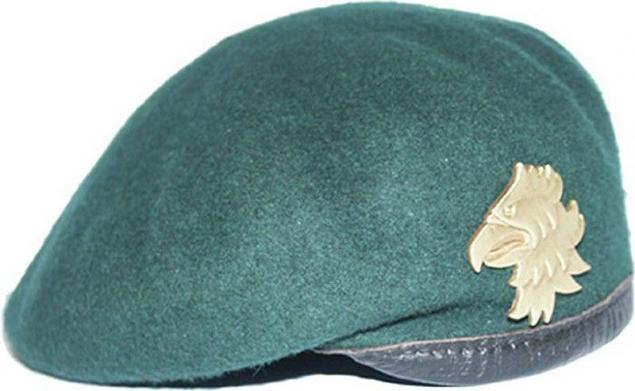
Marines Finland is the Green Berets.

Italian Carabinieri paratroopers regiment wear red berets.

The fighters of a special unit of the Italian Navy wear green berets.

Portuguese marines wearing berets in dark blue.

The soldiers of the British Parachute Regiment beret wearing maroon (Maroon).
The soldiers of the British Parachute Regiment beret wearing maroon (Maroon).

Commandos of the Special Air Service (SAS) are berets beige (tan) from the time of World War 2.

British Royal Marines wearing green berets.

Arrows Brigade of Gurkhas Her Majesty wearing green berets.

Canadian paratroopers wear berets maroon (Maroon).

2nd commando regiment of the Army Green Berets Australia is

American Reydzhery are taking beige (tan).

US 'Green Berets »(United States Army Special Forces) are, of course, the Green Berets, who approved them in 1961, President John F. Kennedy.

Airborne troops of the US Army berets worn maroon (Maroon), they obtained in 1943 from their British colleagues and allies.

Airborne troops of the US Army berets worn maroon (Maroon), they obtained in 1943 from their British colleagues and allies.

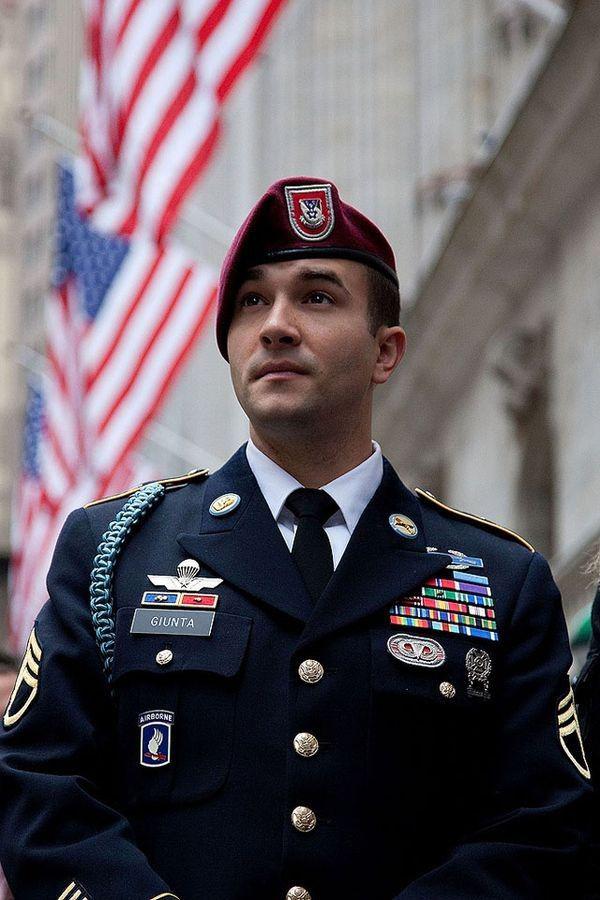

And in the United States Marine Corps (USMC) do not wear berets. In 1951 the Marine Corps was introduced several types of berets, green and blue, but they were rejected by the steep warriors for the reason that look "too feminine».
South Korea Marines wear green berets.


Army special forces of Georgia are berets maroon (Maroon).

Serbian special forces soldiers wearing black berets.
Air Assault Brigade of the Armed Forces of the Republic of Tajikistan is blue berets.

Hugo Chavez is a red beret Parachute Brigade Venezuela.
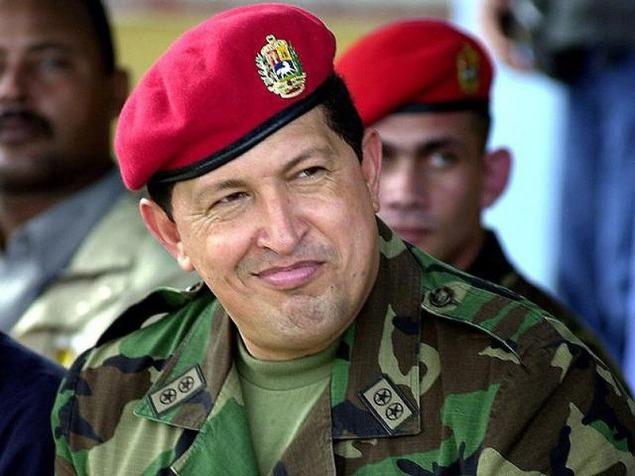
We now turn to the valiant Russian elite troops and our fellow Slavs.

Our response to the appearance of the armies of NATO units who wore berets, in particular of the US SOF, shaped headdress which takes-green color, was Order of the Minister of Defense of the USSR on November 5, 1963 №248. According to the order, we introduce a new field uniforms for special forces marines USSR. This takes the form relied black denim for sailors and sergeants and woolen cloth for officers.

. Badges and Patches on berets Marine many times have changed: the replacement of the red star on the berets sailors and sergeants on the black oval logo with a red star and a bright yellow trim, and later, in 1988, by order of the Minister of Defense of the USSR №250 from March 4 oval logo was replaced by a star, bordered by a wreath. The Russian army was also a lot of innovations, and now it looks like this. After approval of the new uniforms for the marine units, berets appeared in the airborne troops. In June 1967, Colonel General VF Margelov, while the commander of the Airborne Troops were approved sketches of the new uniforms for the airborne troops. The developer was an artist sketches AB Beetle, known as the author of numerous books on Small Arms and as the author of illustrations BOO (Soviet Military Encyclopedia). That AB Beetle offered crimson beret for paratroopers. Takes crimson color was at the time in the world attribute belonging to the landing troops and VF Margelov approved wearing crimson beret military Airborne during the parade in Moscow. On the right side of the beret was stitched a small flag blue, triangular in shape with the logo of the airborne troops. On berets sergeants and soldiers in the front was located in the frame of the star wreath of wheat ears on berets officers, instead of the asterisk was attached badge.

During the parade November 1967, the Marines were dressed in the new form and crimson beret. However, in the early 1968 instead of crimson beret paratroopers start wearing blue berets. According to the military leadership, the color of the blue sky is more suitable for airborne troops and the Order of the Minister of Defense of the USSR №191 from 26 July 1969 blue beret was approved as a ceremonial headdress for Airborne. In contrast to the crimson beret, which were sewn on the right side of the box was blue, the blue beret was the red flag.

And modern Russian version.

oytsy GRU wear uniforms Airborne and, accordingly, the blue berets.

Special purpose units Russian Interior Ministry troops wear maroon (dark red) takes.

But unlike the other branches of service, such as marines or paratroopers, commandos from MIA maroon beret is a sign of skill and handed fighter only after he received special training and proved his right to wear the maroon beret.
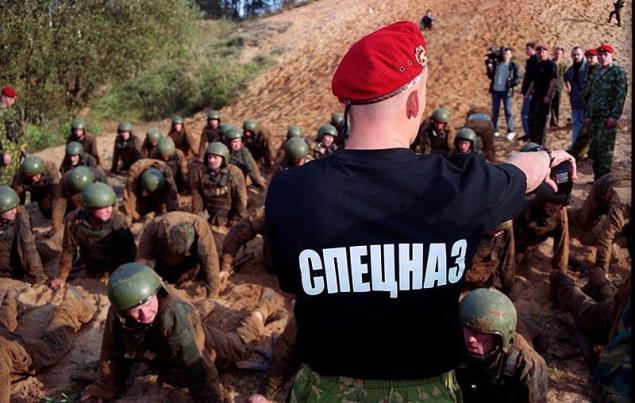


Prior to receipt of the maroon beret special forces soldiers wearing khaki beret

Soldiers exploration of internal troops are green beret. The right to wear this one takes it must earn, and the right to wear maroon beret. Our brothers-Ukrainians also heirs of the USSR, and thus preserve the color berets used before in this country, for its elite units.

Ukrainian Marine Corps is wearing black berets.

Airmobile troops of Ukraine are blue beret.

. Brothers Belarusians in the VDV are blue beret.



Source: pervakov.livejournal.com

Given the practicality beret informal its use in Europe has military goals. An example is the blue beret, which became a symbol of Scottish armed forces in the 16th and 17th centuries. As an official military headgear takes was used during the war for the inheritance of the Spanish Crown in 1830 by order of General Tomás de Zumalacárregui, who wanted no-cost way to make hats resistant to the vagaries of the weather in the mountains, easy to clean and to use for special occasions .

Other countries followed suit, after the creation of the French Alpine rangers in the early 1880s. These mountain troops wore, which included several features innovative for its time. Including large berets, which still exist.
Berets have features that make them very attractive for the military: they are cheap, can be manufactured in a wide range of colors, can be rolled up and stuffed into a pocket or under the shoulder straps can be worn with headphones (which is one reason why the tankers took beret) . Beret was found particularly useful for the crews of armored vehicles, and the British Tank Corps (later the Royal Tank Corps) took the headdress in 1918.

After World War 1, when the question of changes in official uniforms considered at a high level, General Elles, who was a propagandist berets, brought another argument - during maneuvers to take comfortable to sleep and it can be used as a liner. After much debate, the Ministry of Defence, black beret was officially approved by the decree of His Majesty on March 5, 1924. Black beret remain the exclusive privileges of the Royal Tank Corps for quite a while. Then the practicality of this headdress was seen others and by 1940 all British armored units began to wear black berets.

German tank crews in the late 1930s also took picks and a mild slam inside. Black color became popular in the headdresses of tank crews, because it is not visible oil stains.

The Second World War gave takes on a new popularity. British and American commandos, are thrown into the rear of the Germans, in particular, in France, quickly appreciated the convenience berets, especially in dark colors - it was convenient for them to hide hair, they protect your head from the cold, takes used as a balaclava, etc. Some British units, entered berets as a headdress connections and branches. For example it was with SAS - Special Aviation Service, Special Forces, engaged in sabotage and reconnaissance behind enemy lines - they took the sand-colored beret (it symbolized the wilderness, where SASovtsam had to work against the army of Rommel). British paratroopers have chosen takes crimson - according to legend, the color offered writer Daphne du Maurier, the wife of General Frederick Brown, one of the heroes of World War II. For color beret paratroopers immediately got the nickname "cherries". Since then, raspberry beret became the unofficial symbol of military parachutists worldwide.

The first use of berets in the US military refers to 1943. 509th Airborne Regiment was crimson beret from their English counterparts, in recognition and uvazheniya.Ispolzovanie taken as a headdress soldiers in the Soviet Union takes its beginning in 1936. According to the order NKO wear berets dark blue, as part of a summer uniforms, soldiers were supposed to female and female students of military academies.

Berets have become the default military headdress in the late 20th and early 21st century, as well as a cocked hat, quiver, cap, garrison cap, cap, at one time in their respective eras. Berets are now worn by many soldiers in most countries around the world.

And now, in fact, taken in the elite of the army. And we start, of course, with the Alpine rangers - Division who introduced the fashion of wearing berets in the army. Alpine huntsman (Highland Fusiliers) - elite mountain infantry of the French Army. They are trained for combat operations in mountainous areas and in urban areas. Wear a dark blue beret.

French Foreign Legion beret wearing a light green color.


French Navy commandos wearing a green beret.

French marines wearing berets in dark blue.


French Air Force commandos wear dark blue berets.

French paratroopers wearing red berets.


Airborne troops wear berets Germany maroon (Maroon).
German Special Forces (KSK) is berets of the same color, but with a different logo.

Vatican Swiss Guards are large black beret.

Dutch Royal Marines wearing berets in dark blue.


. Airmobile Brigade (11 Luchtmobiele Brigade) of the Netherlands Armed Forces beret wearing maroon (Maroon).

Marines Finland is the Green Berets.

Italian Carabinieri paratroopers regiment wear red berets.

The fighters of a special unit of the Italian Navy wear green berets.

Portuguese marines wearing berets in dark blue.

The soldiers of the British Parachute Regiment beret wearing maroon (Maroon).
The soldiers of the British Parachute Regiment beret wearing maroon (Maroon).

Commandos of the Special Air Service (SAS) are berets beige (tan) from the time of World War 2.

British Royal Marines wearing green berets.

Arrows Brigade of Gurkhas Her Majesty wearing green berets.

Canadian paratroopers wear berets maroon (Maroon).

2nd commando regiment of the Army Green Berets Australia is

American Reydzhery are taking beige (tan).

US 'Green Berets »(United States Army Special Forces) are, of course, the Green Berets, who approved them in 1961, President John F. Kennedy.

Airborne troops of the US Army berets worn maroon (Maroon), they obtained in 1943 from their British colleagues and allies.

Airborne troops of the US Army berets worn maroon (Maroon), they obtained in 1943 from their British colleagues and allies.



And in the United States Marine Corps (USMC) do not wear berets. In 1951 the Marine Corps was introduced several types of berets, green and blue, but they were rejected by the steep warriors for the reason that look "too feminine».
South Korea Marines wear green berets.


Army special forces of Georgia are berets maroon (Maroon).

Serbian special forces soldiers wearing black berets.
Air Assault Brigade of the Armed Forces of the Republic of Tajikistan is blue berets.

Hugo Chavez is a red beret Parachute Brigade Venezuela.

We now turn to the valiant Russian elite troops and our fellow Slavs.

Our response to the appearance of the armies of NATO units who wore berets, in particular of the US SOF, shaped headdress which takes-green color, was Order of the Minister of Defense of the USSR on November 5, 1963 №248. According to the order, we introduce a new field uniforms for special forces marines USSR. This takes the form relied black denim for sailors and sergeants and woolen cloth for officers.

. Badges and Patches on berets Marine many times have changed: the replacement of the red star on the berets sailors and sergeants on the black oval logo with a red star and a bright yellow trim, and later, in 1988, by order of the Minister of Defense of the USSR №250 from March 4 oval logo was replaced by a star, bordered by a wreath. The Russian army was also a lot of innovations, and now it looks like this. After approval of the new uniforms for the marine units, berets appeared in the airborne troops. In June 1967, Colonel General VF Margelov, while the commander of the Airborne Troops were approved sketches of the new uniforms for the airborne troops. The developer was an artist sketches AB Beetle, known as the author of numerous books on Small Arms and as the author of illustrations BOO (Soviet Military Encyclopedia). That AB Beetle offered crimson beret for paratroopers. Takes crimson color was at the time in the world attribute belonging to the landing troops and VF Margelov approved wearing crimson beret military Airborne during the parade in Moscow. On the right side of the beret was stitched a small flag blue, triangular in shape with the logo of the airborne troops. On berets sergeants and soldiers in the front was located in the frame of the star wreath of wheat ears on berets officers, instead of the asterisk was attached badge.

During the parade November 1967, the Marines were dressed in the new form and crimson beret. However, in the early 1968 instead of crimson beret paratroopers start wearing blue berets. According to the military leadership, the color of the blue sky is more suitable for airborne troops and the Order of the Minister of Defense of the USSR №191 from 26 July 1969 blue beret was approved as a ceremonial headdress for Airborne. In contrast to the crimson beret, which were sewn on the right side of the box was blue, the blue beret was the red flag.

And modern Russian version.

oytsy GRU wear uniforms Airborne and, accordingly, the blue berets.

Special purpose units Russian Interior Ministry troops wear maroon (dark red) takes.

But unlike the other branches of service, such as marines or paratroopers, commandos from MIA maroon beret is a sign of skill and handed fighter only after he received special training and proved his right to wear the maroon beret.



Prior to receipt of the maroon beret special forces soldiers wearing khaki beret

Soldiers exploration of internal troops are green beret. The right to wear this one takes it must earn, and the right to wear maroon beret. Our brothers-Ukrainians also heirs of the USSR, and thus preserve the color berets used before in this country, for its elite units.

Ukrainian Marine Corps is wearing black berets.

Airmobile troops of Ukraine are blue beret.

. Brothers Belarusians in the VDV are blue beret.



Source: pervakov.livejournal.com
